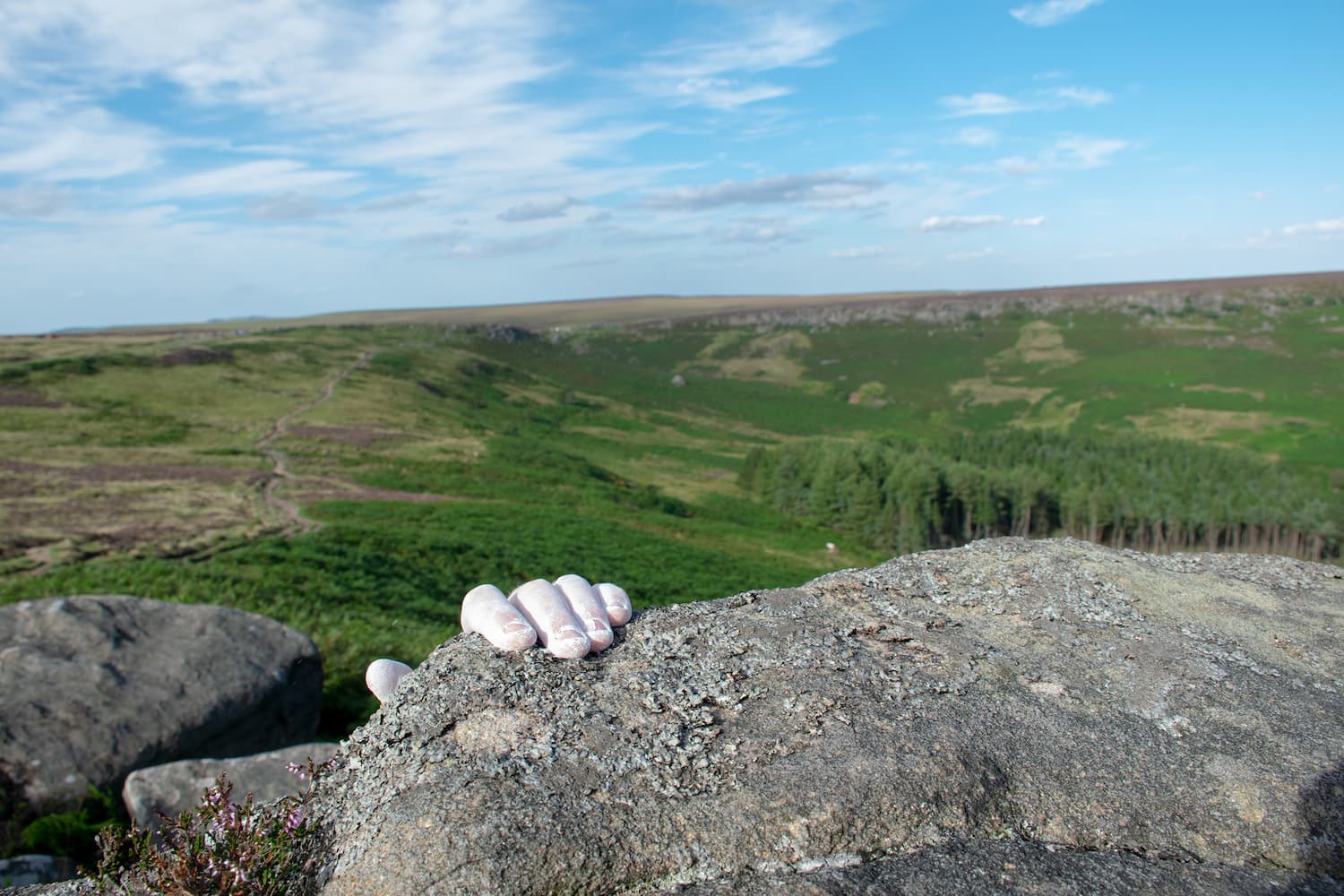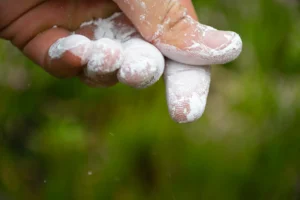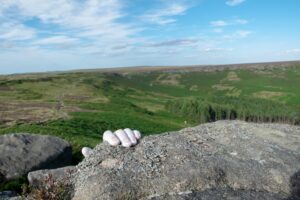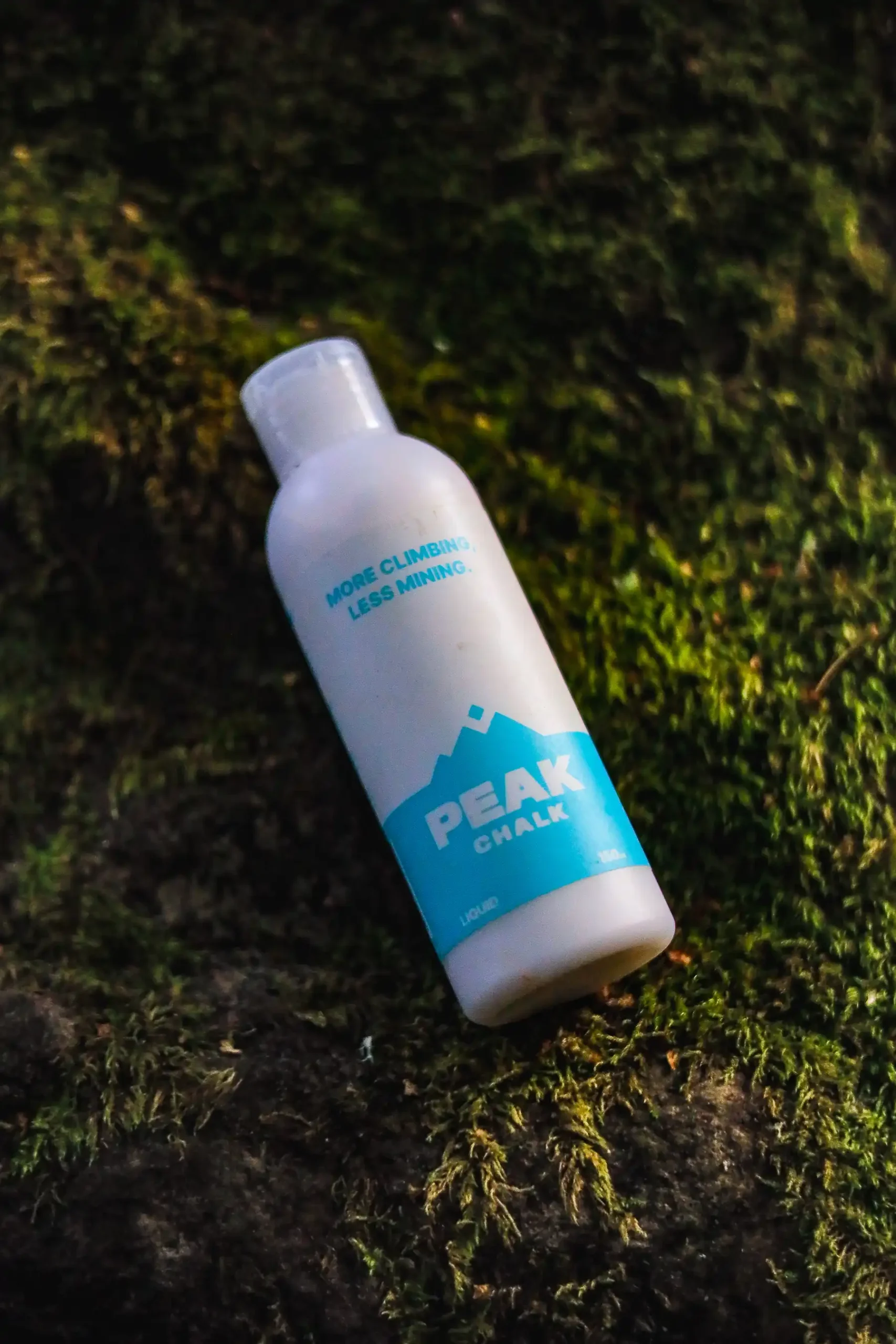Weather conditions play a crucial role in the effectiveness of climbing chalk and can significantly impact your grip on the rock. Understanding these effects and adapting your chalk use accordingly can greatly enhance your climbing performance.
Weather Impact on Climbing Chalk: Temperature
Hot Weather
In warm temperatures, your hands tend to sweat more, reducing the effectiveness of chalk. The increased moisture can cause chalk to clump or become less absorbent. To combat this:
- Apply a thin layer of liquid chalk as a base before using loose chalk
- Reapply chalk more frequently
- Consider using a chalk with higher absorption properties
Cold Weather
Cold temperatures can cause your hands to become dry and less pliable, affecting your grip. In these conditions:
- Use less chalk to avoid over-drying your skin
- Opt for a softer, finer chalk that won’t further dry out your hands
- Warm up your hands thoroughly before climbing
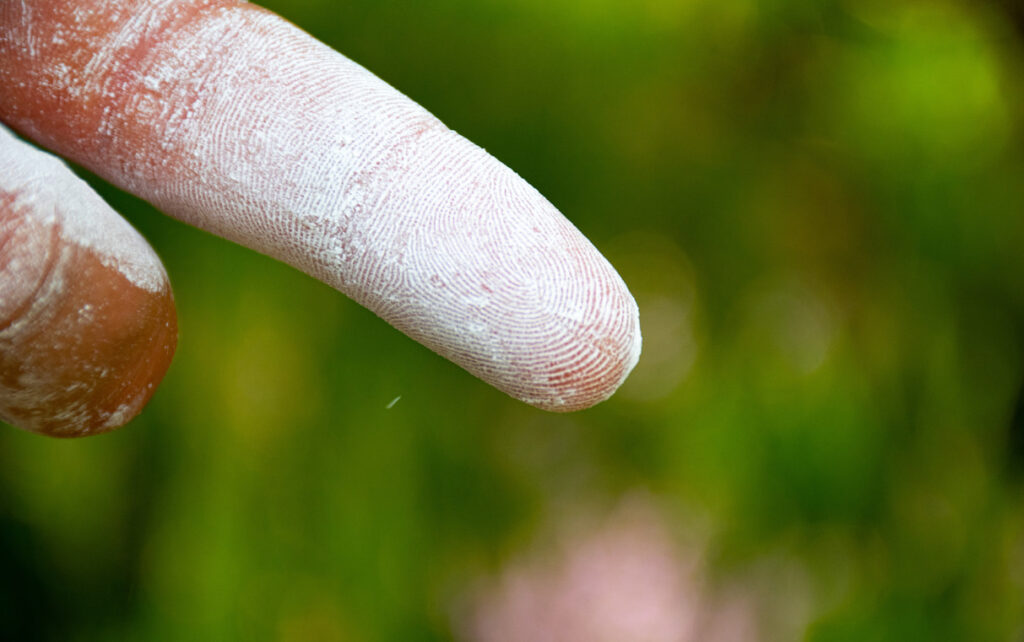
Weather Impact on Climbing Chalk: Humidity
High Humidity
Humid conditions pose a significant challenge for climbers, as moisture in the air can quickly saturate chalk and reduce its effectiveness. To adapt:
- Use liquid chalk, which forms a longer-lasting barrier against moisture
- Carry extra chalk and reapply more frequently
- Consider chalk blends specifically designed for humid conditions
Low Humidity
In dry climates, chalk can be more effective, but it may also lead to excessive drying of your skin. To maintain balance:
- Use chalk sparingly to avoid over-drying
- Choose a chalk with added skin-conditioning ingredients
- Stay hydrated to prevent your skin from becoming too dry
Weather Impact on Climbing Chalk: Precipitation
Rain
Wet conditions obviously pose challenges for chalk use. When faced with light rain or damp rock:
- Opt for liquid chalk, which adheres better in moist conditions
- Use chalk sparingly, as it can create a slippery paste when mixed with water
- Focus on technique rather than relying heavily on chalk
Wind
Windy conditions can quickly blow away loose chalk, reducing its effectiveness. To counter this:
- Use a chalk ball or sock to minimize chalk loss
- Apply liquid chalk as a base layer
- Chalk up in sheltered areas when possible
Adapting Your Chalk Strategy
To maximize your climbing performance in various weather conditions:
- Monitor the forecast: Check weather conditions before your climb to prepare accordingly.
- Experiment with different chalk types: Test various chalk formulations to find what works best in different climates.
- Adjust application frequency: Increase or decrease how often you chalk up based on weather conditions.
- Combine methods: Use a combination of liquid and loose chalk for optimal grip in challenging conditions.
By understanding how weather impacts your chalk use and adapting your approach, you can maintain a reliable grip and focus on conquering your next climbing challenge, regardless of the climate. For high quality climbing chalk that is eco-friendly click here.
